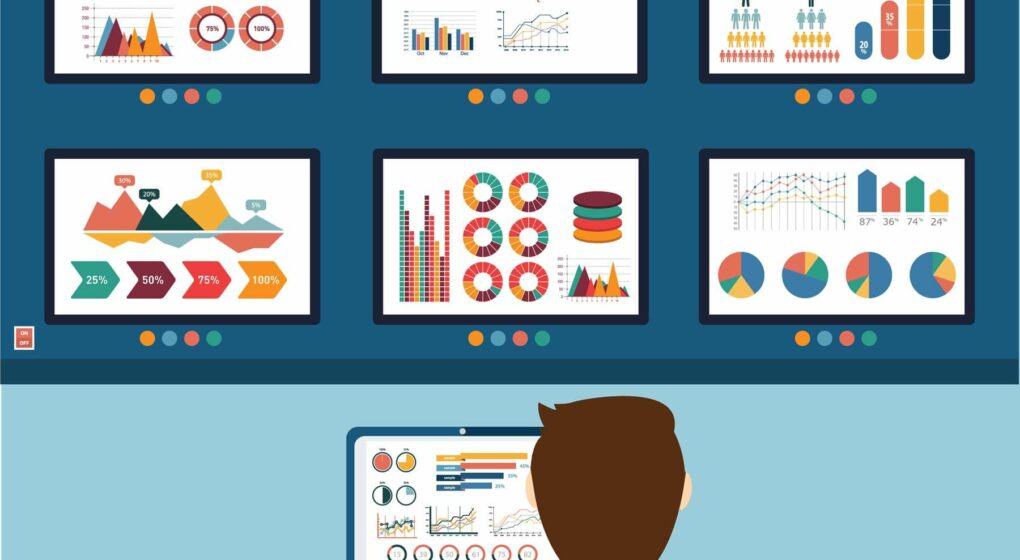
Categories:
Social media marketing had a rocky start in the business world, mostly because marketers struggled to measure its impact. But the data available from today’s social media marketing is rich and insightful. So, with the abundance of this data, how do you determine what to measure?
Start with a clear understanding of which metrics matter for YOUR BRAND or business, and why. Begin by looking at your overall marketing objectives, and from there break out specific goals for social media. Then, determine which metrics make the most sense to track to show progress toward those goals. For example, if your overall objective is to sell more widgets, a social media goal might be to increase awareness of the widgets and how they work, which could be measured through post impressions, reach, or even clicks to the widget website.
But what if you aren’t selling widgets? What if you’re trying to help people eat healthier, or make better financial choices? Those are more abstract goals. In this case, measuring social media user engagements such as video shares or comments may make more sense. Other metrics to consider include: recipe downloads, email list sign-ups, video completion rates or minutes watched, and the ratio of engagements to views. The list goes on. If you’ve ever downloaded a Facebook Insights report, it can be completely overwhelming. Just remember, you don’t need to measure everything.
The secret to effective social media measurement is to be specific and to interpret the data. You have to look at the numbers and then at the story those numbers tell. Once you’ve done that, you can translate those metrics into progress toward strategic goals and use them to determine what your social media strategy and executional tactics should be moving forward. Still not sure where to start? Here are 7 common social media metrics and what they can (and can’t) help you measure.
1. Reach
Reach is an important metric because it is most similar to the way we measure non-digital media. So, it allows for performance comparisons across digital and traditional channels. Unlike traditional media, where reach is only an estimate based on viewership, readership or circulation data, social media reach is an exact science – it’s the actual number of people who saw a piece of content. It’s important, however, to distinguish reach from impressions – which is the number of times a piece of content is displayed. Often, we find a larger number of impressions than reach because some people will view the content multiple times. You can think of impressions as “views” and reach as “unique views.”
Use reach and impressions to determine how effective your campaigns are at getting in front of your target audience. They are strong metrics to track when measuring for an awareness campaign goal.
2. Engagement
Engagement is another common social media metric, but it’s more abstract. Technically, the term engagement refers to the number of people who interact with your content. The problem is that “interaction” can be defined in many different ways depending on which social media platform you are tracking. The most common definition of engagement is an interaction that requires physical engagement – i.e. more than just a view. It could be a click, “like,” comment, or share.
Measuring engagement can be useful in determining which posts are resonating with your audience, but it doesn’t mean much on its own. For example – 100 likes might seem like stellar engagement on a post that was seen by just 500 people, or it could be peanuts if the post was viewed by millions.
For this reason, we also measure the engagement rate or the percentage of people who interact with a post relative to the number of people who saw it. Measuring engagement rate is particularly useful for brands that promote or boost their social media posts to generate higher reach. The engagement rate allows for comparison of boosted posts with others that had fewer views, but perhaps higher levels of relative engagement. When you look at engagement this way, your results might surprise you.
Engagement rate is most effective at determining which content is resonating the most with your target audience and how engaged the audience is with your brand.
3. Shares
It is useful to measure specific types of engagement, and shares are one of those harder to come by actions on social media. Shares symbolize the popularity and value of your content and create social currency – meaning your content was valuable, and users thought it would make them look good/smart/funny/trendy to share it on their own feed.
Each share reflects the number of times your content was reposted by a user to their wall, board, timeline, friend’s timeline, or feed. The result is more potential views, engagements and shares of your content. An increased number of shares often correlates with increased reach as each new share exposes your content to a whole new set of social media connections.
Use shares to measure the social currency of your content.
4. Clicks
Measuring clicks may sound like a straightforward metric, but you want to make sure you’re measuring meaningful clicks to a website and not simply post clicks. Often people will click on a post to enlarge an image or because they think it links them somewhere even though it doesn’t. These clicks are called “post clicks.” When a user clicks on an actual link, that is dubbed a “link click.”
Measuring link clicks is important for brands that want to drive website traffic. For example, the link on social media sends users to a blog, landing page, or other destination outside of the platform. If this is a metric that sounds important for your brand or business, you may also want to consider “cost per click.” This is simply the number of link clicks divided by the money spent to obtain those clicks (either media dollars or labor to write and share the posts). If you’re running digital ads, this will be a familiar metric and help compare efficiencies across platforms.
Use link clicks, NOT post clicks, to measure the efficiency of a campaign at driving website traffic.
5. Messages
Many brands forget to track incoming messages from users, but this metric is one of the most important forms of engagement on social media. Like it or not, social media is a customer service platform, and users will often use messaging, as well as comments, to communicate with a brand. All brands should be measuring the number and nature of the messages they receive in order to assess customer service needs and insights.
Many social media platforms also take into account message response time in their algorithms, favoring those pages with a shorter response time. Tracking common themes in messages as well as sentiment also provides insight into the types of information, feedback, and issues customers are seeking out.
Use messages to track customer engagement and gain target audience insights.
6. Video Views/Completions
Video content is the #1 type of content that users engage with on social media. Video views and video completions seem pretty straightforward but require a lot of context. For example, each social media platform defines a view differently. Facebook (and Facebook-owned Instagram) count anything longer than 3 seconds as a view, whereas a view on YouTube is counted after “about 30 seconds” of video play.
Video completion rates are calculated by dividing the number of people who watch the entire video by the number of people who viewed some portion of it. Measuring video views and completion rates can be incredibly helpful in evaluating the quality of a piece of content, but make sure you are comparing apples to apples when you measure across different social media platforms.
Use video views and completion rates to evaluate the quality (entertainment value) and “stickiness” of a piece of content.
7. Website Behavior
A metric that is often missed by social media marketers is website behavior. While it’s not measured on social media, it’s an excellent indicator of whether the social media marketing efforts are effective. Use Google Analytics to track how visitors referred by social behave on the website – do they stay on the site for long? Visit multiple pages? Convert on offers? How does their behavior compare to traffic referred by other marketing efforts such as digital advertising or organic search?
Use website behavior metrics to connect social media marketing efforts and real business outcomes and/or website conversions.
The bottom line is that social media marketing is highly measurable. There are a multitude of available metrics that can be helpful or confusing and overwhelming. Developing a strategic plan with iterative goals will help businesses identify which metrics matter most, making social media reporting simpler and more straightforward for marketers.
About Ethos
Ethos is a multiplatform branding agency that develops and executes integrated marketing campaigns across multiple channels for companies inside and outside of Maine.
At Ethos, we believe that the most effective way to set a company’s marketing course is by finding its core truth – its ethos. We know that once we discover and communicate that core truth, we can truly make a difference for each client’s unique marketing and business objectives.
With Ethos, you get more than a marketing agency. You get a long-term partner whose goals are your goals.
Learn more about the Ethos approach and the work we’ve done for our clients. Want to have a conversation about your brand’s core truth? Contact us!

